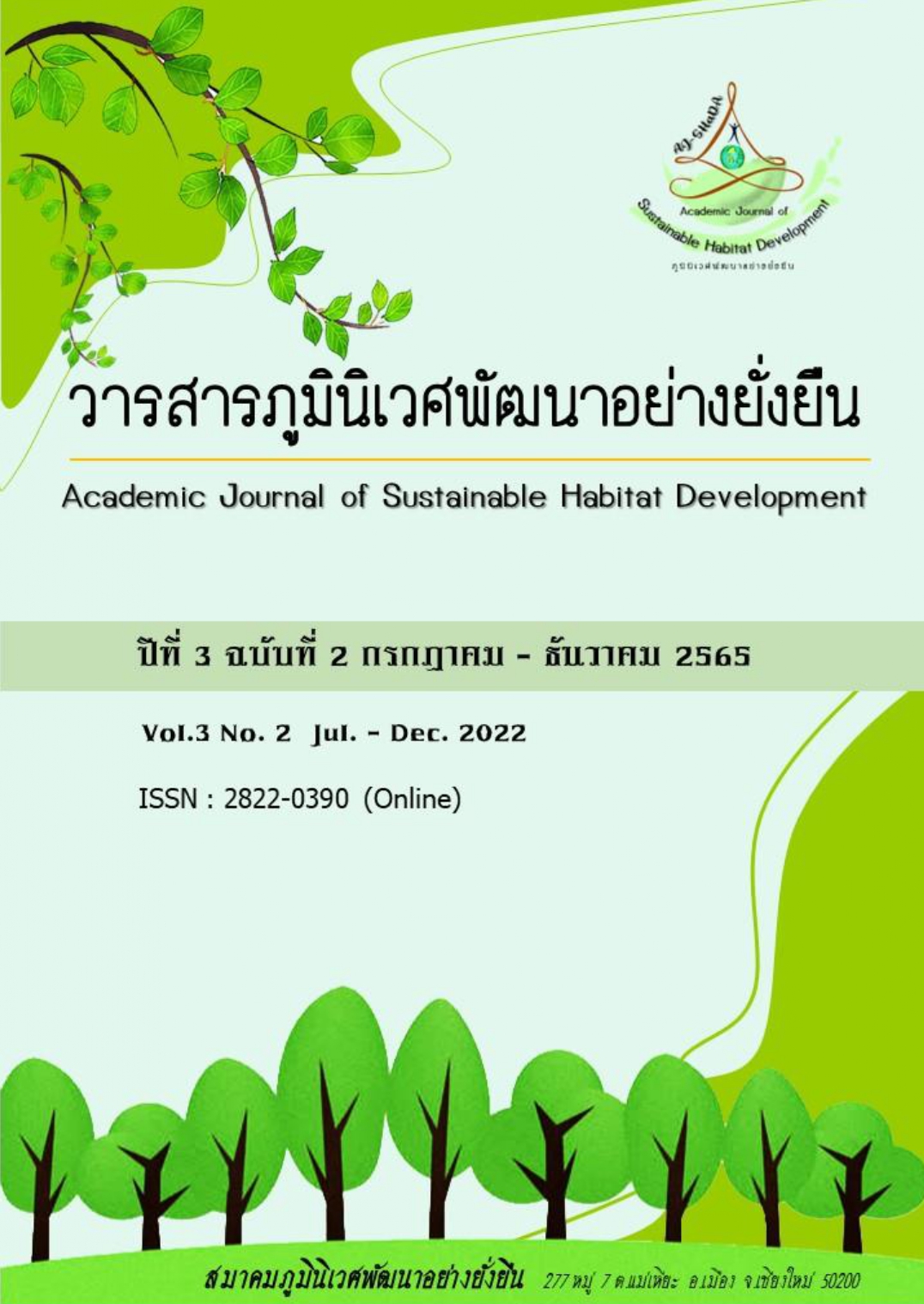Way of life and parallel society of Homeless problem in Chiang Mai Municipality, Chiang Mai Province
Main Article Content
Abstract
The study of a way of life and parallel society of homeless people in Chiang Mai Municipality, Chiang Mai province, is a qualitative study that aimed to 1) study the way of life and spatial distribution of homeless people, 2) study the factors that lead to people becoming homeless, and 3) study the management approach and solution of homeless people in Chiang Mai Municipality. To find out how the homeless in Chiang Mai Municipality live and to do a spatial analysis, the survey area was used to get to know the homeless so that they could be interviewed in depth. People and the government were also asked about the homeless, the role of management, and ways to help the homeless in Chiang Mai Municipality. The results showed that most homeless people are men between the ages of 35 and 54 who live in Chiang Mai and nearby provinces. Their daily routine was random, and they always slept in the same place that was bright and safe. Most of them are hooked on drugs and alcohol. There are three places where the homeless can get help: Tha Phae Gate, the Chang Puak bus station, and Kad Luang. The main reason people become homeless is because of their finances, which have been hurt by the Covid-19 virus epidemic. Now, many governments help with the homeless problem. These include the Community Organizations Development Institute (CODI), the Ministry of Social Development and Human Security, and the Rehabilitation and Development Potential center of the Homeless in Chiang Mai. Their goal is to set up a life principle that will improve the quality of life of the homeless by getting them ready for permanent housing in the future. There is also civil society. Volunteers and people in the community are very important in helping the homeless have a good quality of life.
Article Details

This work is licensed under a Creative Commons Attribution-NonCommercial-NoDerivatives 4.0 International License.
References
ญาณิกา อักษรนำ. (2558). พลวัตรความหมายคำว่า “บ้าน” ของคนไร้บ้าน. วิทยานิพนธ์, หลักสูตรสังคมวิทยาและมานุษยวิทยา, สาขาวิชาการวิจัยทางสังคม คณะสังคมวิทยาและมานุษยวิทยา มหาวิทยาลัยธรรมศาสตร์.
ธนชาติ แสงประดับ ธรรมโชติ. (2553). มาร์กซิสม์กับการแก้ไขความขัดแย้งในสังคมไทย. ประชาไท, สืบค้น 30 มิถุนายน 2564 จาก https://prachatai.com/journal/2010/12/32447
บุญเลิศ วิเศษปรีชา. (2546). โลกของคนไร้บ้าน. กรุงเทพฯ: ศูนย์มานุษยวิทยาสิรินธร (องค์กามหาชน).
บุญเลิศ วิเศษปรีชา. (2558). นักบุญกับคนบาป และศีลธรรมบนท้องถนน: ชีวิตคนไร้บ้าน ในมะนิลา. ชุมทางอินโดจีน: เอเชียตะวันออกเฉียงใต้ปริทัศน์, 4, 7, 304–321.
เป้าหมายการพัฒนาแห่งสหัสวรรษ. (2017).Sustainable Development Goals (SDGs) [ออนไลน์]. http://164.115.22.73/r9health/wp-content/uploads/2017/07/9. สืบค้น 29 มิถุนายน 2564.
เผ่าไทย สินอําพล. (2560) “พื้นที่และเวลา” ในการเข้าถึงเครื่องดื่มแอลกอฮอล์ของนักศึกษาหญิงในมหาวิทยาลัยเชียงใหม่. รายงานวิจัยฉบับสมบูรณ์. ศูนย์วิจัยปัญหาสุรา.
Soja, E. W. (1996). Thirdsapce: Journeys to Los Angeles and Other Real-and-imagined Places.Massachusetts: Blackwell Publishers Inc. ใน เผ่าไทย สินอําพล 2560 “พื้นที่และเวลา” ใน การเข้าถึงเครื่องดื่มแอลกอฮอล์ของนักศึกษาหญิงในมหาวิทยาลัยเชียงใหม่ (น.4)
Sustainable Development Goals. [ออนไลน์]. 2558, สืบค้น 29 มิถุนายน, จาก
Department of Economic and Social Affairs Sustainable Development [ออนไลน์]. 2561, สืบค้น 29 มิถุนายน 2564 จาก https://sdgs.un.org/goals


